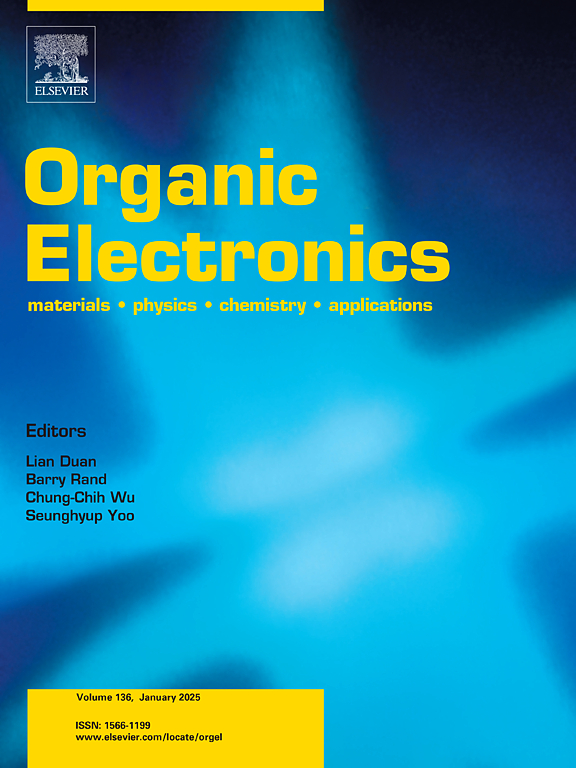Biodegradable TMCM-CdCl3/polylactic acid composites for piezoelectric energy harvesting
IF 2.6
4区 工程技术
Q3 MATERIALS SCIENCE, MULTIDISCIPLINARY
引用次数: 0
Abstract
Hybrid organic-inorganic perovskites (HOIPs) have attracted extensive attention due to their unique piezoelectric properties, mild synthesis conditions, and structural flexibility. However, the intrinsic rigidity and poor biodegradability of HOIPs limit their applications in flexible wearable devices. In this work, we integrate HOIPs (TMCM-CdCl3) (TMCM, trimethylchloromethyl ammonium; Cd, Cadmium; Cl, chloride) with biodegradable polylactic acid (PLA) to fabricate flexible composite films that simultaneously maintain excellent piezoelectric properties, provide the mechanical flexibility needed for wearable devices, and overcome the environmental limitations of conventional non-degradable polymers. The composite film exhibits optimal properties, achieving a short-circuit current (ISC) of 1.74 μA, an open-circuit voltage (VOC) of 4.35 V, and a peak power density of 1.47 × 10−6 W/cm2 under a 5 N force. Furthermore, the composite film exhibits robust mechanical flexibility and cyclic stability, maintaining stability over 10,000 bending cycles, which positions it as a promising candidate for flexible wearable devices with broad application prospects.

可生物降解TMCM-CdCl3/聚乳酸压电能量收集复合材料
有机-无机杂化钙钛矿(HOIPs)因其独特的压电性能、温和的合成条件和结构柔韧性而受到广泛关注。然而,hoip固有的刚性和较差的生物降解性限制了其在柔性可穿戴设备中的应用。在这项工作中,我们将HOIPs (TMCM- cdcl3) (TMCM,三甲基氯甲基铵;Cd,镉;Cl,氯化物)与可生物降解的聚乳酸(PLA)结合在一起,制造出柔性复合薄膜,同时保持优异的压电性能,提供可穿戴设备所需的机械灵活性,并克服传统不可降解聚合物的环境限制。复合薄膜在5n力作用下的短路电流(ISC)为1.74 μA,开路电压(VOC)为4.35 V,峰值功率密度为1.47 × 10−6 W/cm2。此外,复合薄膜表现出强大的机械柔韧性和循环稳定性,在10,000次弯曲循环中保持稳定性,这使其成为柔性可穿戴设备的有希望的候选者,具有广阔的应用前景。
本文章由计算机程序翻译,如有差异,请以英文原文为准。
求助全文
约1分钟内获得全文
求助全文
来源期刊

Organic Electronics
工程技术-材料科学:综合
CiteScore
6.60
自引率
6.20%
发文量
238
审稿时长
44 days
期刊介绍:
Organic Electronics is a journal whose primary interdisciplinary focus is on materials and phenomena related to organic devices such as light emitting diodes, thin film transistors, photovoltaic cells, sensors, memories, etc.
Papers suitable for publication in this journal cover such topics as photoconductive and electronic properties of organic materials, thin film structures and characterization in the context of organic devices, charge and exciton transport, organic electronic and optoelectronic devices.
 求助内容:
求助内容: 应助结果提醒方式:
应助结果提醒方式:


